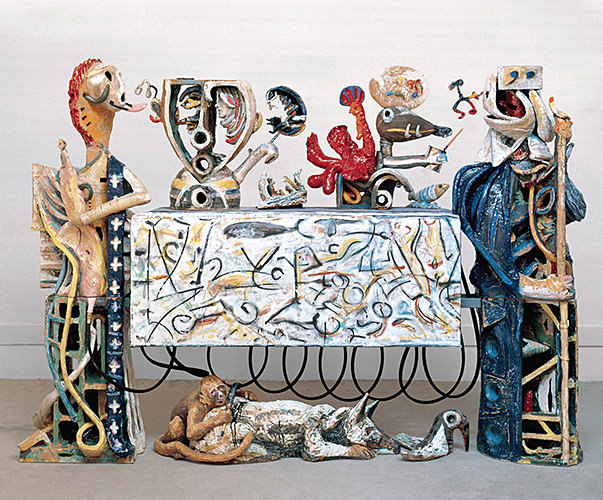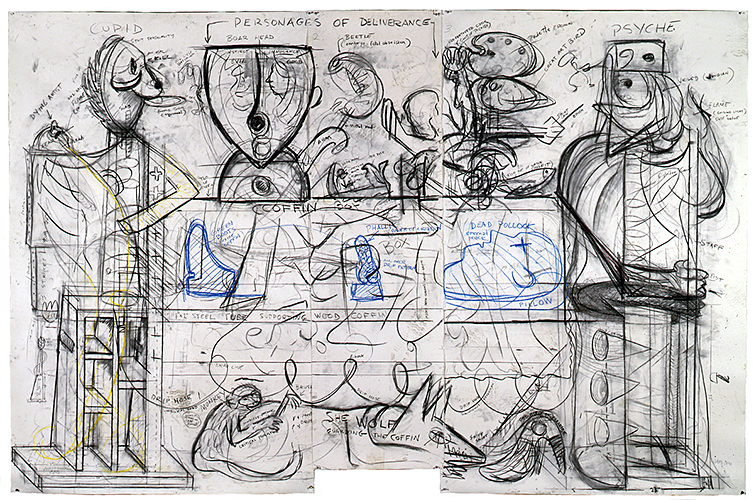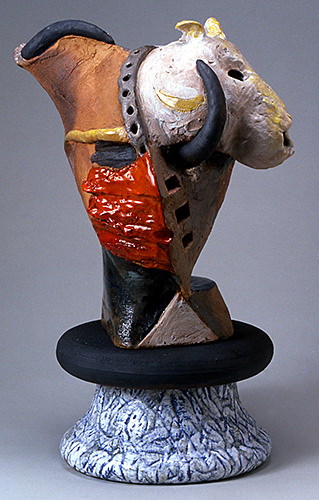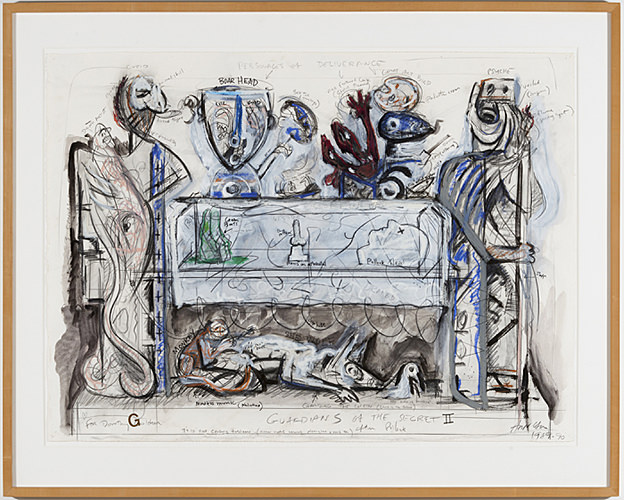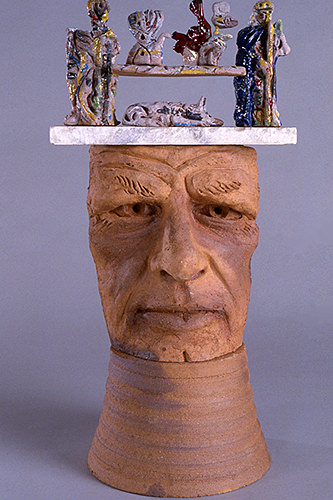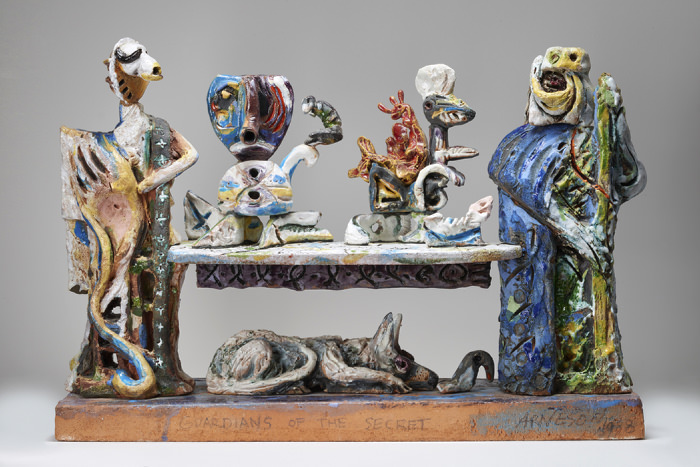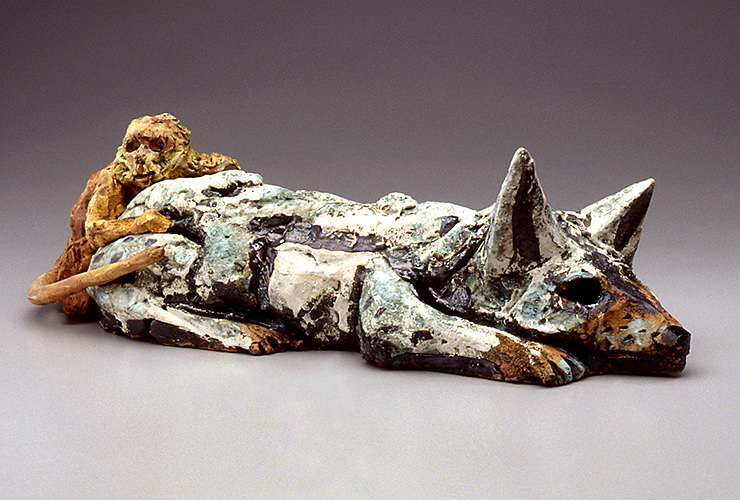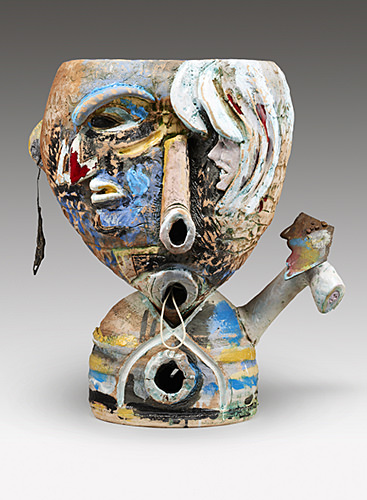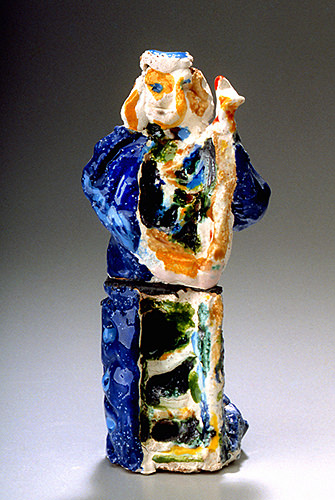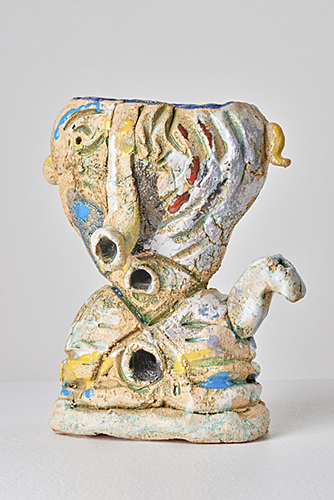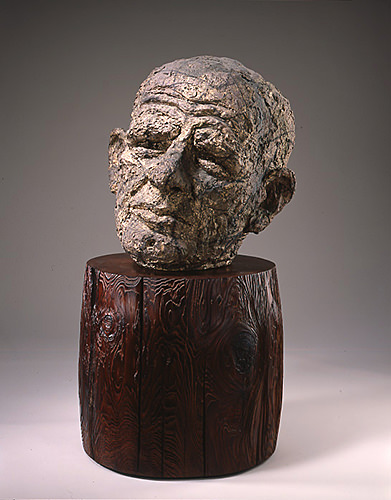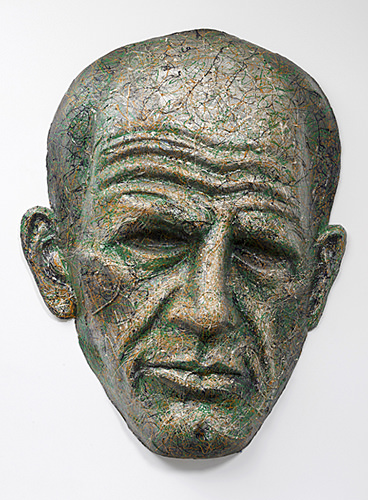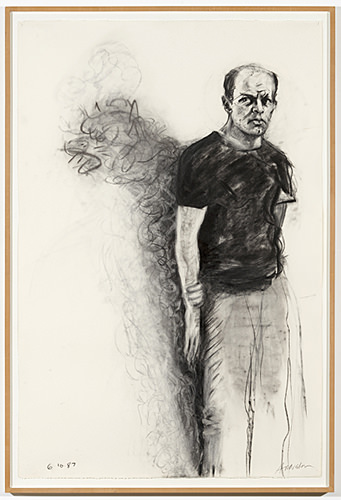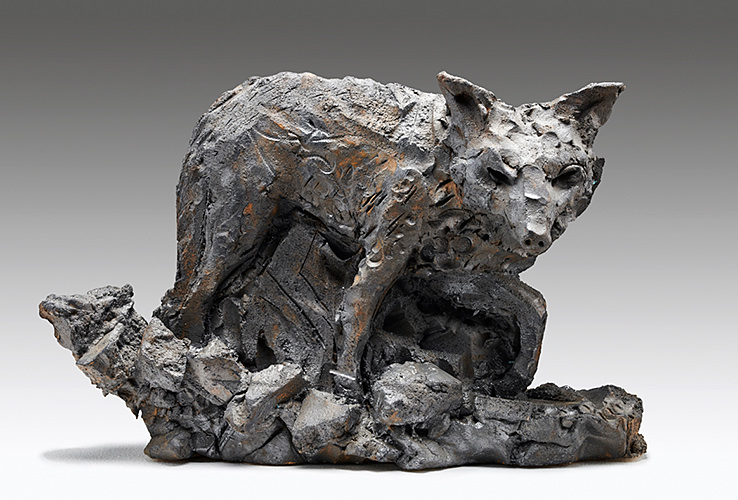Robert Arneson
Guardians of the Secret II
March 12–May 7, 2016
Opening reception: Saturday, March 12, 4–6pm
Press Release
Brian Gross Fine Art is pleased to announce the exhibition, Robert Arneson: Guardians of the Secret II, opening Saturday, March 12, 2016 with a reception from 4-6pm. On view will be Guardians of the Secret II, 1989-1990, Arneson’s tour-de-force ceramic rendering of the 1943 Jackson Pollock painting Guardians of the Secret. The exhibition marks the west coast debut of Guardians, and represents the pinnacle of Arneson’s homage to and exploration of Pollock as his alter ego. Guardians of the Secret II will be on view through May 7, 2016.
Guardians of the Secret II is the culmination of nearly a decade of Arneson’s exploration of both Jackson Pollock the man and his art. Beginning in 1980, Arneson started to look for other artists to use as replacements for himself as both model and muse. Of the different artists he chose, he found Pollock to be the most compelling surrogate, completing 97 works with Pollock motifs between 1982 -1990. Arneson picked Pollock’s Guardians of the Secret, 1943, for his homage to the artist’s work because it was the only major Pollock on view in the Bay Area, found in the permanent collection of SFMOMA.
Built life-size from glazed stoneware, steel, wood, canvas, epoxy, and mixed media, Arneson’s Guardians of the Secret II succeeds in translating Pollock’s semi-abstract painting into concrete, literalized forms, solidifying ambiguities and imaginatively creating a backside to the original work. In interpreting the painting, Arneson turned the sculpture into Pollock’s cenotaph, entombing in the central coffin form symbolic reliquaries. Over the coffin is draped a painted canvas cover that reproduces the central area of the original painting. Resting atop this are various symbolic figures, while supporting all of this is a steel tube stretched between the two life-size guardian figures made out of clay. Under the coffin lies the “she-wolf” who is being mounted by a brush-wielding monkey.
During the three years it took to create Guardians, Arneson made multiple study pieces and models of the entire composition, as well as individual elements. Included in the exhibition will be nine key study works, including the larger than life size working drawing from which the final piece was rendered. Additionally, on view will be three works from the larger “Jackson Pollock Series”, including the haunting drawing J.P.’s Shadow (1987), Stringhalt J (1987), a cast paper wall relief portrait of Pollock covered in paint splatters, and a large scale ceramic head of Pollock resting on a redwood trunk entitled Golden Stone (1986).
A brochure about Guardians of the Secret II with an essay by Bill Berkson will be available in the gallery during the exhibition.
Robert Arneson was born in Benicia, California in 1930. In 1958, he received an MFA from Mills College in Oakland. Arneson taught at the University of California at Davis for 29 years, retiring in 1991. He died in 1992.
Robert Arneson: A Retrospective was organized by Des Moines Art Center in 1986, which traveled to the Hirshhorn Museum and Sculpture Garden, Washington, D.C., the Portland Art Museum, Oregon, and the Oakland Museum of California. The retrospective Robert Arneson was held at the Museum of Contemporary Art, Chicago in 1974. The San Francisco Museum of Modern Art mounted Robert Arneson: Self-Reflections in 1997. Additionally, his work was featured in Visual Politics: The Art of Engagement, San Jose Museum of Art, California, 2006; Arneson and the Object, Palmer Museum of Art, The Pennsylvania State University, 2004; Big Idea: The Maquettes of Robert Arneson, Palo Alto Art Center, California, 2002; Arneson and Politics: A Commemorative Exhibition, M.H. de Young Memorial Museum, San Francisco, 1993; Ceramic Sculpture: Six Artists, Whitney Museum of American Art, New York, 1981; and West Coast Ceramics, Stedelijk Museum, Amsterdam, 1979.
Robert Arneson’s work can be found in major museums nationally and internationally, including The Museum of Modern Art, New York; The Metropolitan Museum of Art, New York; Whitney Museum of American Art, New York; Guggenheim Museum, New York; San Francisco Museum of Modern Art; Smithsonian American Art Museum, Washington DC; Hirshhorn Museum and Sculpture Garden, Washington, DC; Los Angeles County Museum; Museum of Fine Arts, Boston; Fine Arts Museums of San Francisco; Yale University Art Gallery, New Haven, CT; Art Institute of Chicago; Shigaraki Ceramic Cultural Park, Japan, National Museum of Art, Kyoto; Stedelijk Museum, Amsterdam; Philadelphia Museum of Art; Denver Art Museum; Nelson-Atkins Museum of Art, Kansas City, MO; Oakland Museum of California; Berkeley Art Museum, Berkeley, California; Iris & B. Gerald Cantor Center for Visual Arts at Stanford University; and Anderson Collection at Stanford, among others.
